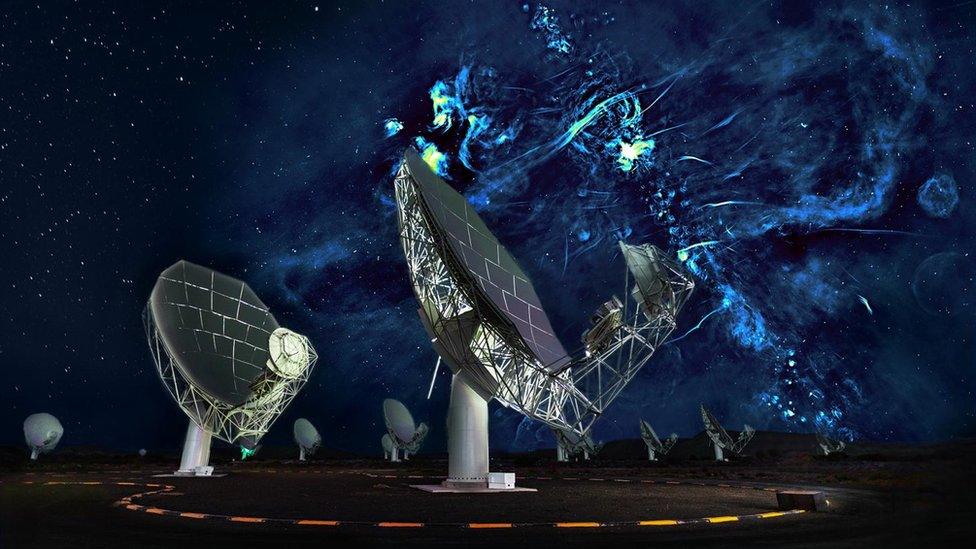Space: How is a telescope in Hawaii helping scientists learn more about the Sun?
- Published
- comments
Scientists can study features as small as 30km (18 miles) across in this sped-up movie
Check out these incredible close-up images of the Sun!
The Daniel K Inouye Solar Telescope (DKIST), which sits on the 3,000-metre-high Mount Haleakala in Hawaii, has released the mesmerising snaps.
The solar telescope is the most powerful of its kind in the world and it was able to capture pictures of the star's surface in more detail than ever before.
There are about 149 million km between the Sun and the Earth and the Sun's diameter is a mindboggling 1.4 million km.
Despite the huge distance, the DKIST was able to capture the Sun's cell-like structures, each of which are about the size of the state of Texas in America!
The images show plasma - which is a bit like a cross between a gas and a liquid - rising, cooling and sinking.
Space 2020: What adventures can we expect?
Why is this good news for scientists?
Scientists will be using the fiery images to help them better understand how the Sun works.
They hope to learn new things about the star's dynamic behaviour which could be key in helping them predict the Sun's energetic outbursts which is often referred to as "space weather".
Charged particles released by the Sun have been known to cause damage to the Earth's satellites and they can also interfere with radio communications and power grids. Experts are looking to find out more on why this happens.
"On Earth, we can predict if it is going to rain pretty much anywhere in the world very accurately, and space weather just isn't there yet," said Matt Mountain, president of the Association of Universities for Research in Astronomy, which manages the DKIST.
"Our predictions lag behind terrestrial weather by 50 years, if not more. What we need is to grasp the underlying physics behind space weather, and this starts at the Sun, which is what the Inouye Solar Telescope will study over the next decades."
- Published13 September 2019

- Published20 November 2018

- Published10 August 2023
